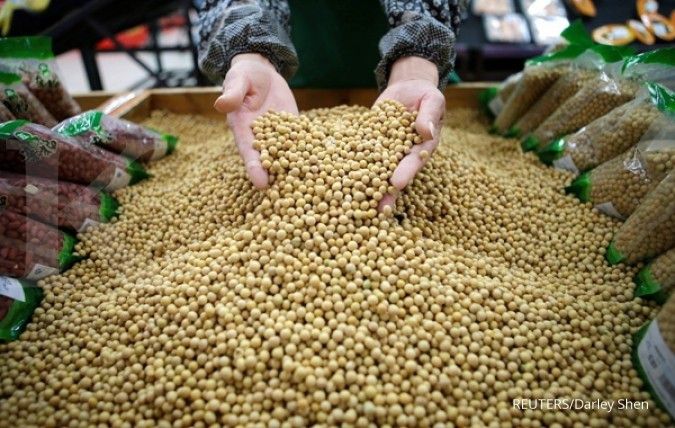
In the past week, soybean prices surged from IDR7,000-9,000/kg to 11,300-12,500/kg, which led to a tempeh and tofu crisis in Indonesia. Several producers, mostly MSMEs, went on strike or persisted by reducing the size or increasing the selling price of their tempeh and tofu.
“Tempeh and tofu are affordable, protein-rich everyday foods that can be served in a variety of ways,” said Dr. Subejo, lecturer at the Faculty of Agriculture and the UGM Graduate School, Tuesday (22/2).
Subejo said the global soybean crisis was triggered by several things, namely the decline in production in the United States and Brazil as the world’s major soybean producers, due to La Nina, and the increase in imports by China, the current largest soybean importer in the world. In 2020, China imported 58 percent of the United States’ total soybean exports.
Soybean is a commodity that is suitably developed in a four-season country, yet not in a tropical country like Indonesia. The productivity of Indonesian soybeans (1.3-1.5 tons/ha) is much lower than soybeans in America (3.1 tons/ha), Oceania (2.14 tons/ha), and Europe (2.08 tons/ha).
“As the population continues to grow, demand for soybeans also increases. Thus, imports are unavoidable,” said the lecturer.
Soybean imports are indeed far greater than the national production capacity. In 2019, Statistics Indonesia (BPS) revealed that the national demand for soybeans was 3.4-3.6 million tons per year. On the other hand, Indonesia’s highest production is only around 1 million tons, indicating the country’s need for soybean imports of 2.4-2.6 million tons annually. According to data, Indonesia imported 2.67 million tons of soybeans (US$1.15 billion), of which 2.63 million tons came from the United States.
“The low soybean production capacity can be seen from the BPS data for 2019. The highest soybean production in 2016 and 2017 was 859,653 tons and 538,728 tons, then increased to 982,528 tons in 2018,” explained Subejo.
Therefore, he opines that a breakthrough in soybean research and innovation is needed to suppress soybean imports significantly and maintain price stability, such as breeding soybean seeds that are productive, adaptive to climate change, and taste good.
One of the soybean innovations developed by UGM is the Mallika black soybean, which is proven to be highly productive, adaptive to water shortages, and suitable for lowland and midland areas. UGM has also involved mycorrhizae in increasing soybean productivity. This root-fungal symbiosis can multiply root exploration up to hundreds of times its volume, increasing the absorption of water and nutrients, which leads to more fertile plants.
“So far, local soybean prices are less attractive to farmers. Soybean cultivation has not become a priority due to competition with more profitable agricultural commodities. Alternatives range from cultivating soybeans on social forestry lands to developing soybean substitutes,” he said.
Jack beans, he continued, could substitute for soybeans. However, many argue soybean-based tempeh and tofu are in a class of their own compared to those made from substitutes.
“Problems related to consumer preferences and changing tastes are never easy,” he said.
Subejo hopes the government will issue incentive programs to encourage farmers to develop soybeans. These programs can be in the form of price subsidies, production facility aids, procurement of machinery and equipment, education on efficient soybean trading strategies, and effective counseling and assistance to farmers.
Author: Agung Nugroho
Photo: Industri Kontan

